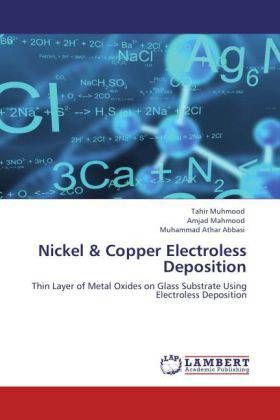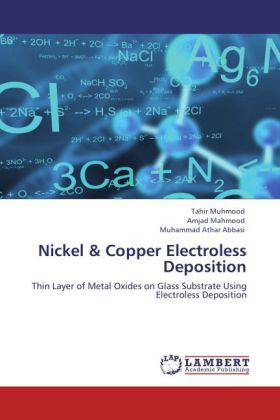
Je cadeautjes zeker op tijd in huis hebben voor de feestdagen? Kom langs in onze winkels en vind het perfecte geschenk!
- Afhalen na 1 uur in een winkel met voorraad
- Gratis thuislevering in België vanaf € 30
- Ruim aanbod met 7 miljoen producten
Je cadeautjes zeker op tijd in huis hebben voor de feestdagen? Kom langs in onze winkels en vind het perfecte geschenk!
- Afhalen na 1 uur in een winkel met voorraad
- Gratis thuislevering in België vanaf € 30
- Ruim aanbod met 7 miljoen producten
Zoeken
Nickel & Copper Electroless Deposition
Thin Layer of Metal Oxides on Glass Substrate Using Electroless Deposition
Tahir Muhmood, Amjad Mahmood, Muhammad Athar Abbasi
Paperback | Engels
€ 60,95
+ 121 punten
Omschrijving
Different kinds of methods such as Chemical Vapor Deposition (CVD), Physical Vapor Deposition (PVD), Sol-Gel Deposition (SGD), Thermal Spray Deposition (TSD), Jet Vapor Deposition (JVD), Triboadhesion Deposition (TAD), & Electroless Deposition (ELD) were used for the coating of metal oxides on glass substrates but it was found that Electroless Deposition is the most effective and common method for deposition of metal oxides on glass substrate due to its unique characteristics. Effectiveness of deposition was studied by the stability of metal oxides (Nickel & Copper Oxides) layer on glass substrate. Stability was measured by comparing the duration of crack formation at different temperatures and by changing the composition of metallic & reducing agents solutions, on glass substrate. Cracks formation was noted and measure with the help of High Efficient Microscope. Metallic & Reducing agent solutions properties were also noted by preparing them with different methods. Reducing agents that commonly used in deposition are hydrogen compounds, in which hydrogen atom is linked to phosphorus, nitrogen, and carbon i.e, Sodium Hypophosphite, Dimethylamine-borane, Hydrazine and Formaldehyde
Specificaties
Betrokkenen
- Auteur(s):
- Uitgeverij:
Inhoud
- Aantal bladzijden:
- 84
- Taal:
- Engels
Eigenschappen
- Productcode (EAN):
- 9783659151163
- Verschijningsdatum:
- 11/06/2012
- Uitvoering:
- Paperback
- Afmetingen:
- 152 mm x 229 mm
- Gewicht:
- 136 g

Alleen bij Standaard Boekhandel
+ 121 punten op je klantenkaart van Standaard Boekhandel
Beoordelingen
We publiceren alleen reviews die voldoen aan de voorwaarden voor reviews. Bekijk onze voorwaarden voor reviews.









